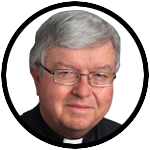
Father Kenneth Doyle
Q. Pope Francis published his encyclical on global warming in June 2015. What actions has the church initiated to put his recommendations into effect? Are we waiting for more guidance from the Holy Father, or should we be looking for something from our bishops and priests? (Centertown, Missouri)
A. Pope Francis did, as you say, address the issue of global warming in his encyclical “Laudato Si'” and the document (perhaps better appreciated under its English title, “On Care for Our Common Home”) speaks of a variety of environmental challenges, urges a broad dialogue on how we are to shape the future of our planet and notes that “a very solid scientific consensus indicates that we are presently witnessing a disturbing warming of the climatic system. … Humanity is called to recognize the need for changes of lifestyle, production and consumption, in order to combat this warming or at least the human causes that produce or aggravate it.”
[hotblock]
The pope returned to the topic in remarks during his September 2015 White House visit, saying that “climate change is a problem that can no longer be left to a future generation.”
Far from waiting for further guidance, there are steps that can be taken immediately, and the pope mentions some of them in the encyclical: “There is a nobility in the duty to care for creation through little daily actions … avoiding the use of plastic and paper, reducing water consumption, separating refuse, cooking only what can reasonably be consumed … using public transport or carpooling, planting trees, turning off unnecessary lights …”
A good resource is the Global Catholic Climate Movement, which includes on its website a list of “nine things a parish can do to help stop climate change (with no budget and no special expertise).”
Likewise, the Archdiocese of Ottawa in Canada publishes a document called “Care for God’s Creation: A Guide for Parishes,” which suggests that a parish form a “green team” responsible for environmental stewardship in the parish, that Catholic teaching on the environment be incorporated into homilies and bulletin inserts, and that the parish consider such measures as an energy retrofit program and an investment in solar panels.
Q. If we are a universal church, why are holy day Mass requirements so different? Even in the U.S., most dioceses have transferred Ascension Thursday to a Sunday. Why not all? (Northampton, Pennsylvania)
A. My answer is that your question is a good one. Part of the current state of the law makes sense to me and part does not. Canon law lists 10 holy days of obligation, but (with the permission of the Vatican) bishops’ conferences within a country may suppress some of them or move them to the nearest Sunday.
The result is that there is wide variety from nation to nation; many countries, like our own, have six non-Sunday holy days of obligation. Australia and the Netherlands have two. I can appreciate why certain days might be especially celebrated in certain places. In Italy on Jan. 6, the feast of the Epiphany, Mass is obligatory. Italians traditionally celebrate Epiphany with gift-giving, much as we do on Christmas. In Ireland, March 17 marks the feast of St. Patrick, that nation’s patron, and it is a holy day of obligation.
Ascension Thursday is a story in itself. Back in the late 1990s, bishops in the United States took notice that Mass attendance on Ascension Thursday had been dropping for a number of years. (Since the feast occurs on the 40th day after Easter, it can fall anywhere from early May to early June, so people don’t have it fixed in their mental calendars.)
As a result, wishing to highlight the importance of the Ascension, most of the ecclesiastical provinces in the U.S. transferred the celebration of the feast (and the obligation of attending Mass) to the nearest Sunday. However, the bishops of New England, some mid-Atlantic states and Nebraska kept the Thursday date.
The result is a fair amount of confusion. (And I won’t even go into the universal bewilderment as to which feasts “don’t count” if they fall on a Saturday or a Monday.)
Like you, I would look — some day in the future — for a bit more standardization and a bit less befuddlement.
***
Questions may be sent to Father Kenneth Doyle at askfatherdoyle@gmail.com and 40 Hopewell St. Albany, N.Y. 12208.
PREVIOUS: Prayer is no magic wand; it strengthens faith in tough times, pope says
NEXT: Readings of the holy Mass – Solemnity of the Most Holy Body and Blood of Christ



Fr. Doyle makes some very good observations but I would further ask why is the Church making the environment a moral imperative? This seems an abdication of the Church’s main duty which is increasing holiness and saving souls. Improving the environment does neither.
Why has “global warming” suddenly been changed to “global climate change” if this is closed science? Why also is there no hard verifiable evidence, only computer models (simulations) that are constantly being changed because their predicted outcomes fail to materialize?
Lastly why is the Church aligning Herself and tacitly lending Her moral support to corrupt and evil forces who are using climate and environmental change to gain power, wealth, and to implement evil worldwide population control programs based on contraception and abortion? This is not the Gospel Message nor is it the example of Jesus Christ and His Apostles so why is the Church doing this?
This is not right!
In addition to the excellent resources of GCCM, I would also point to the resources of Catholic Climate Covenant (catholicclimatecovenant.org) and the U.S. Conference of Catholic Bishops. I agree with Father Doyle, there is much happening in Catholic parishes and schools, as well as by bishops and within dioceses.